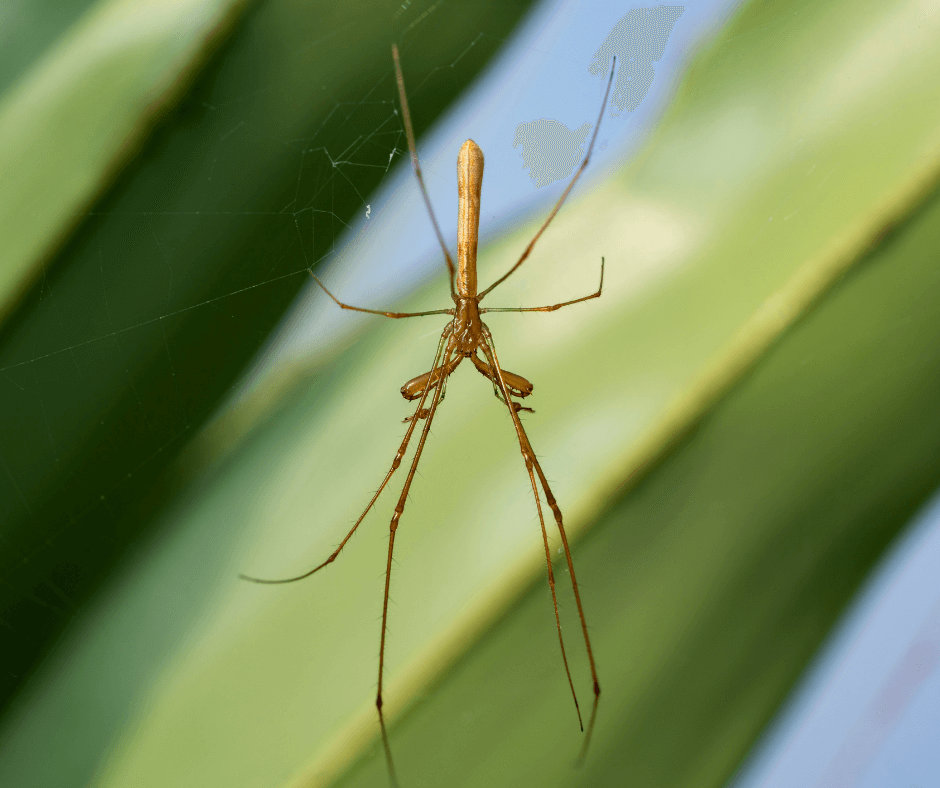Long-Jawed Orb Weaver
Theridion punctipes
Long-Jawed Orb Weaver Stats
Color: Light brown to yellowish with a silvery sheen
Size: Adults are typically 0.5 - 1 inch in length
Shape: Long, slender body with extremely long legs
What is a Long-Jawed Orb Weaver?
Long-jawed orb-weavers are spiders known for their elongated jaws and legs. They are often found near water sources, such as streams and ponds, where they build their delicate webs to catch prey.

Where do Long-Jawed Orb Weavers live?
Long-jawed orb-weavers live in various habitats, especially near water. They build their webs in vegetation close to streams, ponds, and marshes. These spiders can also be found in gardens and forests, wherever there is enough moisture.
What do Long-Jawed Orb Weavers eat?
Long-jawed orb-weavers eat small insects. Their diet includes flies, mosquitoes, and other small bugs that get caught in their webs. They use their long jaws to inject venom and immobilize their prey before eating.
How do Long-Jawed Orb Weavers behave?
Long-jawed orb-weavers are known for their web-building skills. They spin delicate, horizontal webs near water and vegetation. These spiders are not aggressive and usually stay in their webs, waiting for prey to get caught.
How do Long-Jawed Orb Weavers reproduce?
The female long-jawed orb-weaver lays eggs in a silken sac, which she attaches to her web or hides in a safe place. The egg sac can contain many eggs. Once hatched, the spiderlings disperse to build their own webs.
How can you control Long-Jawed Orb Weavers?
Long-jawed orb-weavers are beneficial predators that help control insect populations. If you need to remove them, carefully relocate the spider and its web to a more suitable outdoor location. Maintaining your garden and reducing web-building sites can help manage their presence.
How do Long-Jawed Orb Weavers impact humans?
Long-jawed orb-weavers are not harmful to humans. They rarely bite, and their venom is not dangerous to humans. These spiders can be beneficial by reducing the number of pest insects near water sources and in gardens. Keeping a respectful distance allows for coexistence with these helpful spiders.
Explore More Spiders
Our Pest Control Service Areas
Let us help you eliminate these pests!
We treat your home or office as if it were our own!



